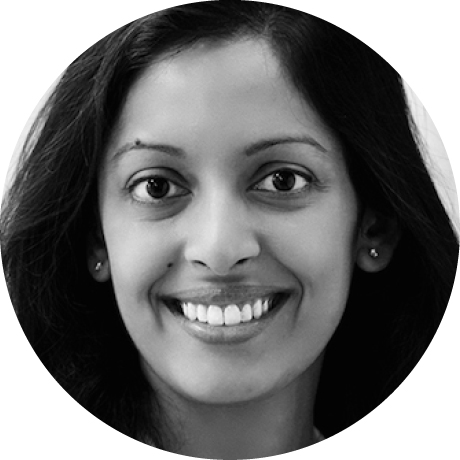supported by


Sumitra S. Khandelwal, MD
Sumitra S. Khandelwal, MD, is an Assistant Professor of Ophthalmology at Baylor College of Medicine and trains residents and cornea fellows at the Michael E. DeBakey Veterans Affairs Medical Center and Ben Taub General Hospital in Houston, Texas.
Please share with us your background.
I grew up outside of Houston with two physician parents, thinking that all I wanted to do was leave Texas and do anything but medicine. Fast-forward, and here I am, finishing my first year as ophthalmology faculty at Baylor in Houston! I was an International Studies major at Washington University in St. Louis with thoughts of pursuing journalism or politics, but I became involved in some volunteer organizations that reminded me how rewarding medicine can be. The road to get here—with residency at Emory in Atlanta and fellowship at Minnesota Eye Consultants—has been invaluable, and when the opportunity arose to come back home to Texas, I took it.
What drew you to ophthalmology and, specifically, to your field of interest?
I fell into ophthalmology my first year of medical school. We were assigned research preceptors, and mine happened to be studying the genetics of corneal dystrophies. I spent the first few days in the lab when one of the ophthalmologists saw I was a medical student. He had me shadow him in clinic. I was hooked by the combination of varied pathology and all kinds of diagnostic instruments and technologies.
Please describe your current position.
I am an Assistant Professor of Ophthalmology at Baylor College of Medicine and Cullen Eye Institute, specializing in cornea, cataract, and refractive surgery. I also teach cataract surgery to residents at the Michael E. DeBakey Veterans Affairs (VA) Hospital and Ben Taub General Hospital. This is a special focus of mine, as much of my research at the VA is on optimizing outcomes in cataract surgery in the resident teaching setting.
Who are/were your mentors?
I have been fortunate to have various mentors in my career. At Emory, Bradley Randleman, MD, is an important resident advocate, and working with him allowed me to develop into a better clinician, surgeon, and clinical researcher. Even years later, we still work together on projects, and I’m constantly learning from him. In fellowship, I had the privilege to work with several leaders in the field: David Hardten, MD; Sherman Reeves, MD; and Thomas Samuelson, MD, were my clinical and surgical mentors. We all have those voices in our heads when we are operating, and Dr. Hardten’s still echoes in mine! Richard Lindstrom, MD, and Elizabeth Davis, MD, both provided me not just clinical knowledge but mentoring on the business aspects of medicine, which you rarely get in training. I can only hope I provide a fraction of the mentorship to someone else that I’ve been lucky to have.
What has been the most memorable experience of your career thus far?
My most memorable experience to date was the first time I received a thank you card from a patient who I operated on at Grady during my residency. It sounds like such a simple thing, but I was so honored. Here is a patient who I knew had trouble paying for his eye drops, whose health was not that good, and whose vision was limited from glaucoma. Yet, he took the time to get this very elegant card and write a touching note. I still have the card, and it reminds me how lucky we are to have a job where we take care of patients.
What are some new technological advances that you have found particularly exciting? Which advances in the pipeline are you most enthusiastic or curious about?
Devices for preoperative and intraoperative cataract surgery have taken off in the past few years. In the few years from my first year of residency to now, I’ve seen improved preoperative tools for evaluation, utilization of cutting-edge imaging technology, and implementation of laser-assisted surgery. All of these steps are great advances toward a safer, more efficient procedure.
We have seen the advent of new device technology and topographies, but it has been a while since a game-changing presbyopia-correcting lens has come onto the market for both cataract surgery and refractive surgery. I really look forward to newer corrections such as the extended depth of focus lenses, light-adjustable lenses, and new refractive surgical techniques.
What is the focus of some of your research?
One of my research interests includes the utilization of topography and tomography for various corneal diseases. We have several projects at our center utilizing these imaging devices for astigmatism, but I’m looking at alternate uses such as for dry eye, keratoconus screening, and ocular surface disease. I have a particular research and clinical interest in keratoconus, as I’ve been involved in several corneal crosslinking projects. In addition, my VA research focuses on improvements in outcomes from resident-performed surgery, including operative times, refractive outcomes, and implementation of new technology such as femtosecond laser-assisted cataract surgery and newer devices utilizing surgical plans for astigmatism correction.
What is a typical day in your life? What keeps you busy, fulfilled, and passionate?
My workday involves a lot of running around: Covering three different locations, I spend each half-day somewhere different. It makes each day exciting but includes a few lunches in the car. It’s the teaching and the research that keep me passionate at work. At home, spending time with family (including my wonderful husband and mischievous dog) and friends is what puts a smile on my face. I make time for the important people in my life, whether it is grabbing a quick dinner, watching football on Sundays, or even just a catch-up phone call during my commute.
What advice can you offer to individuals who are just now choosing their career paths after finishing residency or fellowship?
This is the first step in your career, and that nervous feeling in your stomach is a good thing! It’s the lucky people who have that excitement continue throughout their careers. It’s important to keep things in perspective—few people are just happy with their job. You need to work to keep that work-life balance and remember why you went into medicine. Of course, on a day where the EMR is down, your tech is out sick, and patients are complaining about the wait, it’s OK to temporarily forget it!
Tell us about an innovative procedure you are performing or a new imaging/diagnostic tool that has improved your practice.
I am currently an investigator for several studies using new topography and tomography devices. In particular, I am using anterior segment optical coherence tomography (OCT) to image patients with ocular surface diseases as a screening tool and to follow progression and response to treatment. In addition to dry eye and tear deficiency, I am using anterior segment OCT in a study with our dermatology department in patients with atopic dermatitis who have nonspecific eye complaints as a way to screen and follow clinical course. We are also using the device for corneal crosslinking outcomes and in our post-LASIK patients to determine IOL power. As medicine becomes more technology-based, having objective measurements such as OCT becomes more useful for clinicians and for patients.





